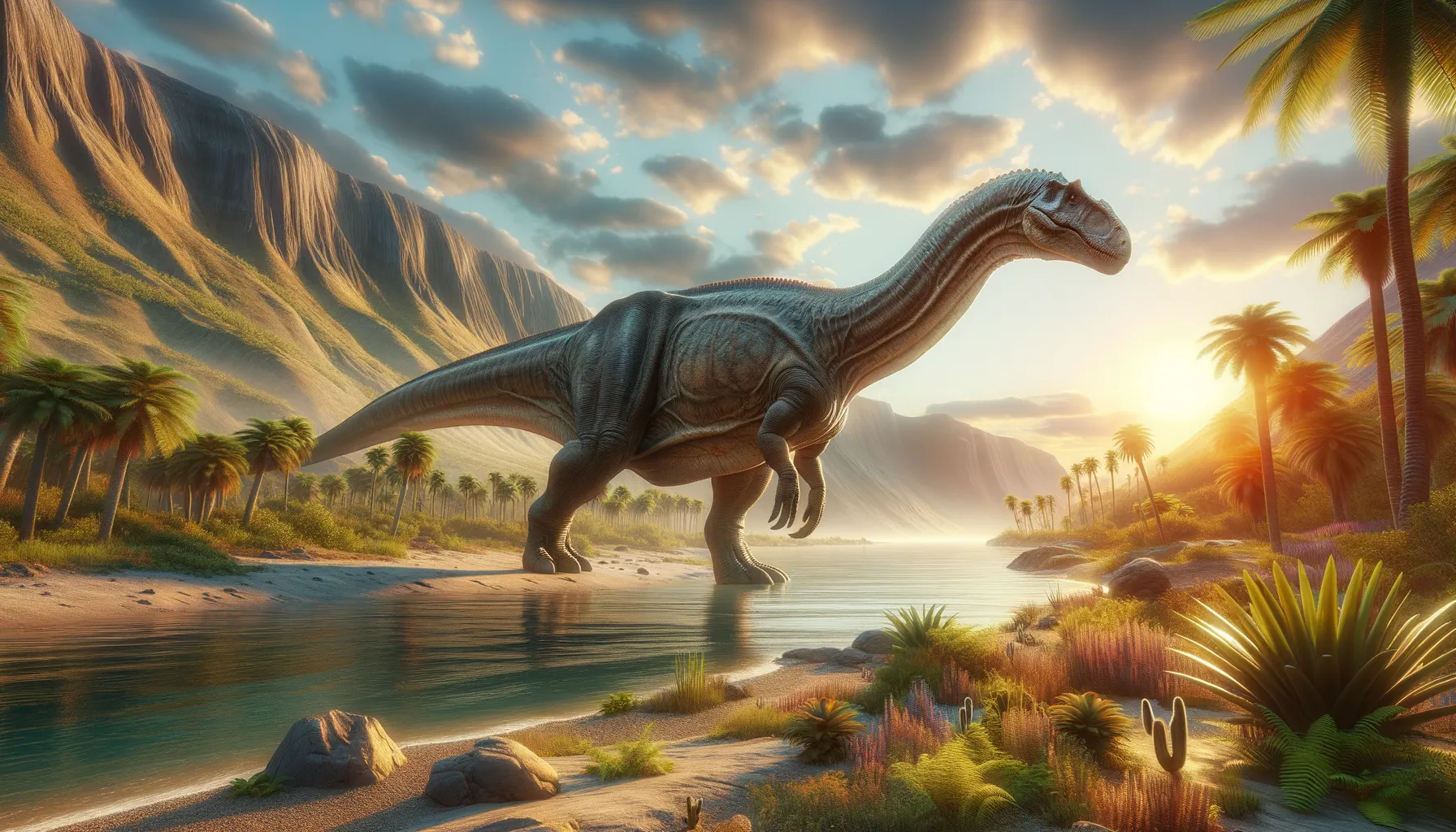
Chubutisaurus
Giant sauropod from ancient South America!
Period
Cretaceous
Length
Length ranged between 70 and 100 feet.
Height
Approximate height of 20 feet at the shoulders.
Weight
Weighed around 30-50 tons.
Chubutisaurus was a massive sauropod dinosaur belonging to the titanosaur group that lived during the Cretaceous period. Its large size and lengthy body made it one of the giants of its time, inhabiting what is now South America. The first fossils were unearthed in Argentina, shedding light on its existence and allowing paleontologists to learn more about this fascinating creature. Studying its remains helps scientists understand the biodiversity of the Cretaceous period.
Diet
Chubutisaurus was herbivorous, feeding on a variety of plant materials available during the Cretaceous period. Its diet mainly consisted of leaves, ferns, and other vegetation that grew in its habitat.
Hunting
Being a herbivore, it did not hunt but spent much of its time browsing for food. Its long neck allowed it to reach high into trees to access foliage that other species could not.
Environmental challenges
Chubutisaurus faced several environmental challenges, including predators and changing climate conditions. Its massive size was a defense mechanism against predators, deterring most carnivores from attacking. Additionally, shifts in plant availability due to climate or seasonal changes would have challenged its foraging abilities, impacting its food resources.
Speed
Slow-moving due to massive size.
Lifespan
Estimated to be 70-100 years.
First discovery
First discovered in Argentina in the 1960s.
Fun Facts
- Chubutisaurus was a massive dinosaur that roamed the Earth around 100 million years ago during the Late Cretaceous period.
- Its name, Chubutisaurus, means 'Chubut lizard,' named after the Chubut Province in Argentina where its fossils were discovered.
- This dinosaur was a sauropod, which means it was part of the group of long-necked, plant-eating giants like Brachiosaurus and Diplodocus.
- Chubutisaurus is believed to have been around 65 feet long, making it one of the larger sauropods of its time.
- Fossil evidence of Chubutisaurus is limited, but what has been found suggests it had a robust body suitable for a powerful herbivore.
- It lived in a region that would have been lush and full of vegetation, perfect for a massive plant-eater like itself to thrive.
- While the Chubutisaurus' long neck helped it reach high vegetation, its size also likely deterred predators.
Growth and Development
Chubutisaurus likely experienced rapid growth in its early years to reach its massive size, providing a crucial advantage against predators. Growth rates would have slowed as it reached maturity, focusing energy on maintaining its substantial body mass. Understanding its growth helps paleontologists understand the life history and survival strategies of large sauropods.
Habitat
This dinosaur thrived in what is now South America, likely living in forested areas with abundant vegetation. The variety of plants available provided ample food supplies, allowing it to maintain its enormous size. The environment would have also provided shelter from environmental elements and predators.
Interaction with other species
As a herbivore, Chubutisaurus likely coexisted with other plant-eating dinosaurs, sharing resources and habitat spaces. It needed to be wary of large carnivores, which might have seen a young or isolated individual as a potential meal. Its size and social behavior could have provided some protection against such threats.
Natural lifespan
Chubutisaurus had a natural lifespan of about 70 to 100 years.
Reproduction
Chubutisaurus most likely laid eggs, similar to other sauropods, which were deposited in nests built on the ground. The nesting sites would have been carefully chosen to protect the eggs from predators and environmental factors.
Social behaviour
It is believed that Chubutisaurus may have displayed social behavior, moving in groups or herds to safeguard against predators. This social structure would have allowed for better protection of juveniles and increased survival rates in its harsh environment.
Fossil locations
The primary fossil location for Chubutisaurus is Argentina, where its remains were first discovered. These fossils provided crucial evidence for researchers to piece together more about its lifestyle and physical characteristics. Ongoing excavations in South America continue to enrich the understanding of its distribution and ecological role.
